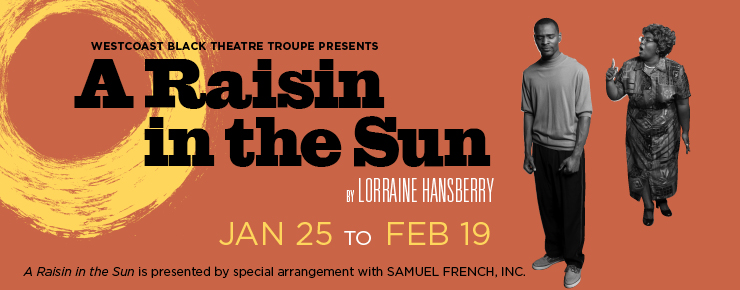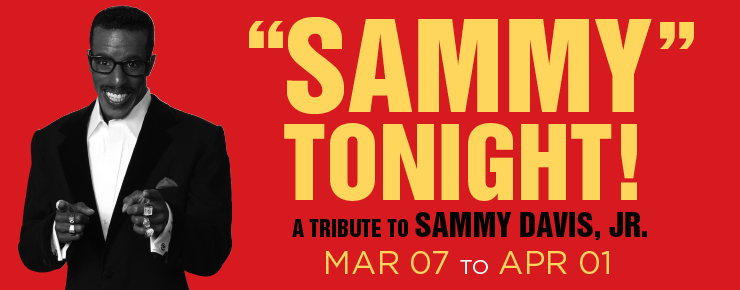
Jitney was the first play August Wilson wrote in a series of ten plays called The Pittsburgh Cycle. Set in different decades, each depicts the experiences of African-Americans throughout the 20th century. Jitney won several awards when it was produced in NYC and London years after he first wrote it: 2000 Drama Critics' Circle Award for best new play, 2001 Outer Critics Circle Award for outstanding off-Broadway play, and the 2002 Laurence Olivier Award for best new play. In total, Mr. Wilson earned seven New York Drama Critics' Circle awards, a 1987 Tony Award, and two 1990 Pulitzer Prizes for drama (Fences and The Piano Lesson).
Jitney is presented by special arrangement with Samuel French, Inc.

Conceived and adapted by Nate Jacobs
Nate Jacobs creates an exciting new musical that gives homage to the heyday of Rock and Roll. Relive the most exciting musical era of our time with the upbeat, energetic music from Fats Domino, Little Richard, and Muddy Waters. After singing and swinging to songs like "Why Do Fools Fall in Love," "Stagger Lee," and "Shake Rattle and Roll," you'll be twisting the night away and dancing out the door!
1950s Music History
The 1950s was a decade of innovation and change in the music industry. After World War II, Americans craved songs with optimistic, innocent, and romantic lyrics. Adults enjoyed classic pop music, country and western, and light rhythm and blues. Black crooners such as Sammy Davis Jr., Nate King Cole, Aretha Franklin and Dionne Warwick crossed the invisible barrier to become popular entertainers. To add a little spice, Creole, Cajun, and Latin rhythms were integrated into mainstream music. In addition, doo-wop songs, a form of rhythm and blues in which black ensembles sang in complex harmony, became record hits.
However, to America’s teenagers, most of these forms of music were sappy, “uncool.” They yearned for excitement and freedom in their music. They wanted lyrics that dealt with emotions and situations in their life, not those of their parents. Thus emerged a whole new sound – rock n’ roll. The movement began in Memphis where artists like Carl Perkins blended rhythm and blues with gospel or country music, and then added a strong back beat. His “rockabilly” recording of “Blue Suede Shoes” was a huge success. Another pioneer of rock n’ roll, Chuck Berry, popularized the electric guitar, which helped to make this music distinctive. The release of "Shake, Rattle and Roll" and "Rock Around the Clock" by Bill Haley set a nation dancing to the new beat and opened up a generation gap in music listening.

By Lorraine Hansberry
January 25 – February 19, 2012
In this highly acclaimed drama, conflict arises when an insurance check for $10,000 provides the means to fulfill conflicting dreams for a mother and her two children. Hope, racism, feminism and pride are some of the themes in this play about a poor black family's struggle to gain middle-class acceptance in 1950s Chicago. Named the best play of 1959 by the NY Drama Critics’ Circle, and nominated for four Tony Awards, the effects of dreams deferred remain relevant today.
"A play that changed American theater forever" -- The New York Times
A Raisin in the Sun is presented by special arrangement with SAMUEL FRENCH, INC.
Articles
NPR's Morning Edition highlights Hansberry
Wikipedia on A Raisin in the Sun
Interesting facts about A Raisin in the Sun:
- Opened March 10, 1959, starring Sidney Poitier and Ruby Dee, and closed June 25, 1960 after 530 performances
- Noted as first Broadway play written by an African-American woman and directed by an African-American man (Lloyd Richards)
- Inspired by her family's legal battle against the racially segregated housing law in Chicago’s south side
- Considered a turning point in American drama, as it was the first honest depiction of a black family on stage
- Made into a 1961 film starring most of the original Broadway cast, adapted into a Tony award winning musical in 1973, and produced for television in 1989
- The title for A Raisin in the Sun comes from the poem “Harlem” written by Langston Hughes:
What happens to a dream deferred?
Does it dry up
like a raisin in the sun?
Or fester like a sore—
And then run?
Does it stink like rotten meat?
Or crust and sugar over—
like a syrupy sweet?
Maybe it just sags
like a heavy load.
Or does it explode?

March 7 – April 1, 2012
Developed by De'zhon Fields and Nate Jacobs
WBTT presents the multi-talented De’zhon Fields celebrating one of the greatest American superstars, Sammy Davis, Jr. This musical revue features all the hits Sammy made famous, such as: “I’ve Gotta Be Me,” “Mr. Bojangles,” and “Candy Man.” For the past ten years, Mr. Fields has traveled worldwide showcasing his homage to the legendary icon known as “Mr. Entertainment.” From Vegas to Dublin, Fields has audiences clamoring for more.
Many performers want to emulate Sammy Davis, Jr., who made his debut at the age of four in the 1920s and, for the next 60 years, danced, sang, and acted his way into people’s hearts around the globe. De’zhon Fields didn’t start out his musical career imitating Sammy, but his resemblance and style led him toward creating this tribute.
Fields shares more in common with Sammy than similar facial features. He also shares the love and passion of entertainment. Get ready to be thoroughly entertained!
What they're saying about De'zhon Fields:
"Fields is a dead-ringer for Sammy Davis, and when he hits those high notes in 'What Kind of Fool Am I', you'd swear the famous song and dance man was back."
The Windsor Star
"De'zhon Fields is a stringy piece of electricity. His 'That Old Black Magic' embodies Davis' never-quitting drive and schmaltziness. In 'Mr. Bojangles' spotlighting Davis' prowess, Fields' legs and hips churn and twist with a wild life of their own."
Asbury Park Press
Articles
De'zhon Fields as Sammy Davis Jr.
Sammy Davis Jr.'s official website
Bio True Story – Sammy Davis Jr.
The Kennedy Center's Biography of Sammy Davis Jr.
NY Times Obituary and Articles of Sammy Davis Jr.
Interesting facts about Sammy Davis, Jr.
- Survived a near-fatal car crash in which he lost his left eye
- Remarked in 1989 about his fight for racial equality, “Long before there was a civil rights movement, I was marching through the lobby of the Waldorf Astoria, of the Sands, the Fountainbleau, to a table at the Copa. I'd march alone.”
- Wrote three books:Yes I Can (1965) and Life In A Suitcase (1980) and Why Me, published the year before his death.
- Recognized with an Emmy Award, NAACP Image Award, and as a Kennedy Center Honoree


